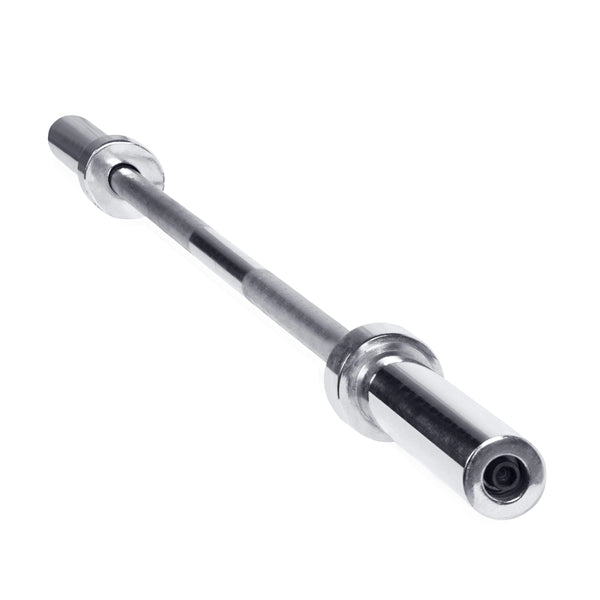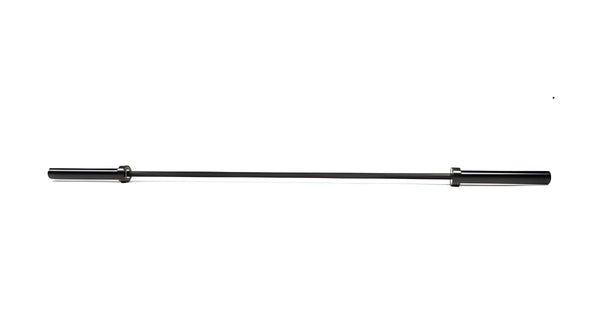Your Cart is Empty
March 21, 2024 3 min read
Deadlifting is a strength and power exercise that has been around for centuries. It is one of the most popular exercises used to build strength and power, making it an important part of any fitness program. The deadlift is a compound exercise that works multiple muscle groups at once, including the glutes, hamstrings, lower back, and core. The goal of the deadlift is to lift a heavy barbell from the floor to a standing position, with your arms extended and locked out above your head.
Shop The Collection: BarbellsDeadlifting offers many benefits to athletes and those looking to improve their overall strength and power. It is a great full-body exercise that helps to develop strength in all of the major muscle groups. Additionally, deadlifting can help to improve posture by strengthening and stabilizing the core muscles as well as the lower back. Deadlifting also helps to increase flexibility and mobility, which can be beneficial for athletes and those looking to increase their performance.
 Shop The Gear: CAP Barbell Olympic Chrome Bar, 6-ft, $95.99 USD
Shop The Gear: CAP Barbell Olympic Chrome Bar, 6-ft, $95.99 USD
Another benefit of deadlifting is that it helps to build explosive power. By utilizing a heavy weight, the deadlift forces the body to generate more force than it would normally be able to. This helps to build strength and power, allowing athletes to perform better in their respective sports or activities. Finally, deadlifting helps to increase bone density, which is important for preventing osteoporosis and other joint-related issues.
Shop The Collection: BarbellsThe deadlift is a simple yet effective exercise that can be performed with either a barbell or dumbbells. To begin, approach the barbell with your feet hip-width apart, keeping your back straight and your chest up. With your hands gripping the bar slightly wider than shoulder-width apart, bend at the hips and knees until you are able to grip the bar securely. From here, lift the bar by driving through your heels and pushing your hips forward, finishing in a standing position with the bar locked out at your hips.
 Shop The Gear: Concorde Olympic Training Barbell – 33 lb, $214.99 USD
Shop The Gear: Concorde Olympic Training Barbell – 33 lb, $214.99 USD
It’s important to focus on proper form when performing the deadlift. Keeping your back flat and chest up will help to keep the spine in a neutral position and reduce the risk of injury. Additionally, it’s important to keep the bar close to your body throughout the entire movement. Doing so will help to ensure that you are using the correct muscles and engaging the right muscles during the exercise.
There are several tips to keep in mind that will help you improve your deadlift technique and maximize your results. First, focus on keeping your core tight throughout the entire movement. Engaging your core will help to stabilize your body and ensure that the correct muscles are working throughout the exercise. Second, make sure to keep your shoulders over the bar. Doing this will ensure that you are lifting the weight with your legs rather than your back.
Third, practice dynamic stretching before each workout. Dynamic stretching helps to warm up the body, prepare the muscles for exercise, and reduce the risk of injury. Finally, make sure to take adequate rest between sets. Taking short rest periods between sets helps to ensure that your muscles are properly recovered and ready for the next set.
Deadlifting is an effective exercise for improving strength and power. It works multiple muscle groups at once, helping to build overall strength and power while increasing flexibility and mobility. Additionally, it helps to increase bone density and improve posture. To get the most out of your deadlifts, focus on proper form, keep your core tight, keep your shoulders over the bar, practice dynamic stretching, and take adequate rest between sets.
Shipping Protection gives you peace of mind while saving you time and money.
Shipping Protection provides coverage for eligible orders that are lost or damaged in transit, or stolen after delivery has been confirmed by the carrier. MAGMA Fitness, through its partners, administers the protection program and may receive compensation for these services. Coverage is subject to the terms, conditions, and exclusions outlined in our Shipping Protection Terms & Conditions.